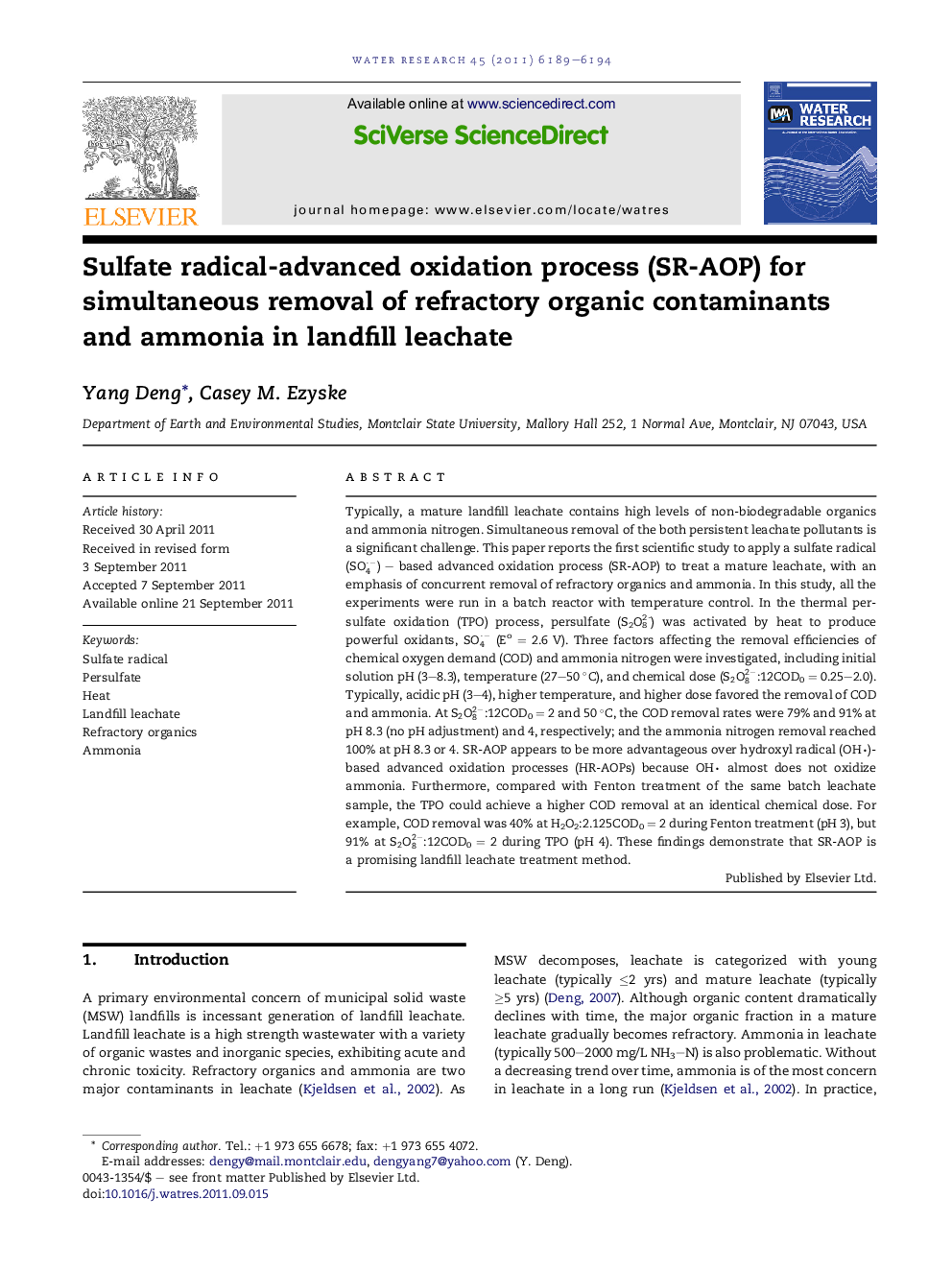| کد مقاله | کد نشریه | سال انتشار | مقاله انگلیسی | نسخه تمام متن |
|---|---|---|---|---|
| 4482702 | 1316866 | 2011 | 6 صفحه PDF | دانلود رایگان |

Typically, a mature landfill leachate contains high levels of non-biodegradable organics and ammonia nitrogen. Simultaneous removal of the both persistent leachate pollutants is a significant challenge. This paper reports the first scientific study to apply a sulfate radical (SO4·−) – based advanced oxidation process (SR-AOP) to treat a mature leachate, with an emphasis of concurrent removal of refractory organics and ammonia. In this study, all the experiments were run in a batch reactor with temperature control. In the thermal persulfate oxidation (TPO) process, persulfate (S2O82-) was activated by heat to produce powerful oxidants, SO4·− (Eo = 2.6 V). Three factors affecting the removal efficiencies of chemical oxygen demand (COD) and ammonia nitrogen were investigated, including initial solution pH (3–8.3), temperature (27–50 °C), and chemical dose (S2O82−:12COD0 = 0.25–2.0). Typically, acidic pH (3–4), higher temperature, and higher dose favored the removal of COD and ammonia. At S2O82−:12COD0 = 2 and 50 °C, the COD removal rates were 79% and 91% at pH 8.3 (no pH adjustment) and 4, respectively; and the ammonia nitrogen removal reached 100% at pH 8.3 or 4. SR-AOP appears to be more advantageous over hydroxyl radical (OH∙)-based advanced oxidation processes (HR-AOPs) because OH∙ almost does not oxidize ammonia. Furthermore, compared with Fenton treatment of the same batch leachate sample, the TPO could achieve a higher COD removal at an identical chemical dose. For example, COD removal was 40% at H2O2:2.125COD0 = 2 during Fenton treatment (pH 3), but 91% at S2O82−:12COD0 = 2 during TPO (pH 4). These findings demonstrate that SR-AOP is a promising landfill leachate treatment method.
Figure optionsDownload high-quality image (159 K)Download as PowerPoint slideHighlights
► Sulfate-radical advanced oxidation process was first applied to treat landfill leachate.
► Sulfate radicals were produced from heat activation of persulfate.
► The thermal persulfate process could simultaneously remove refractory organics and ammonia.
► Sulfate racial oxidation was advantageous over hydroxyl radical oxidation in leachate treatment.
Journal: Water Research - Volume 45, Issue 18, 15 November 2011, Pages 6189–6194